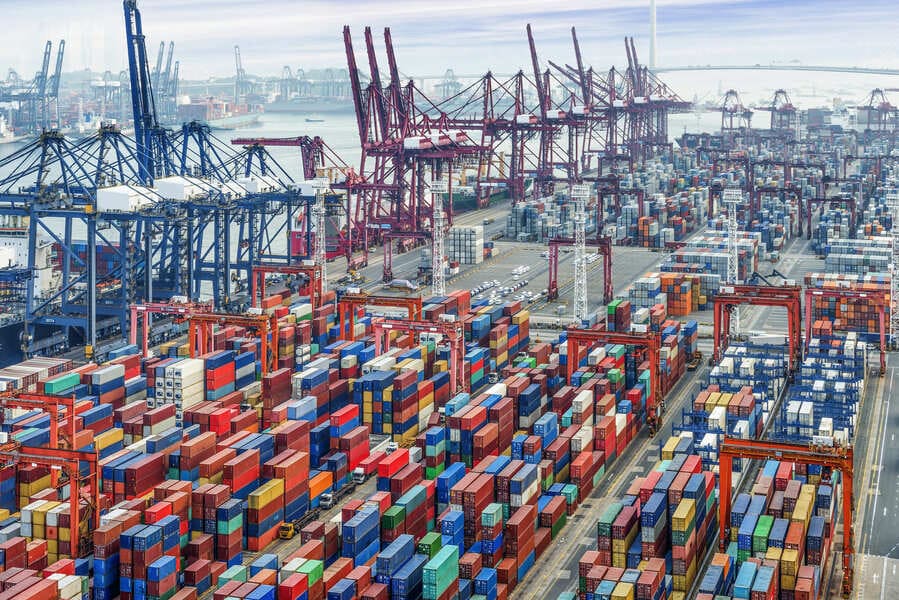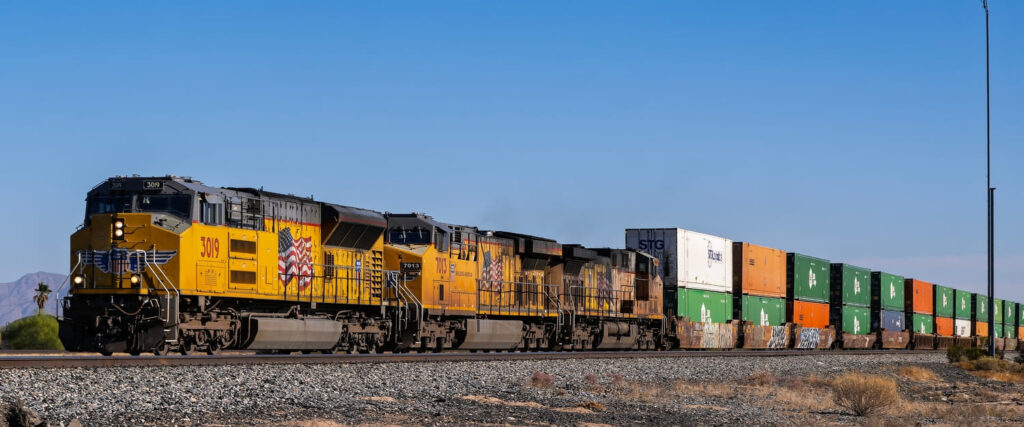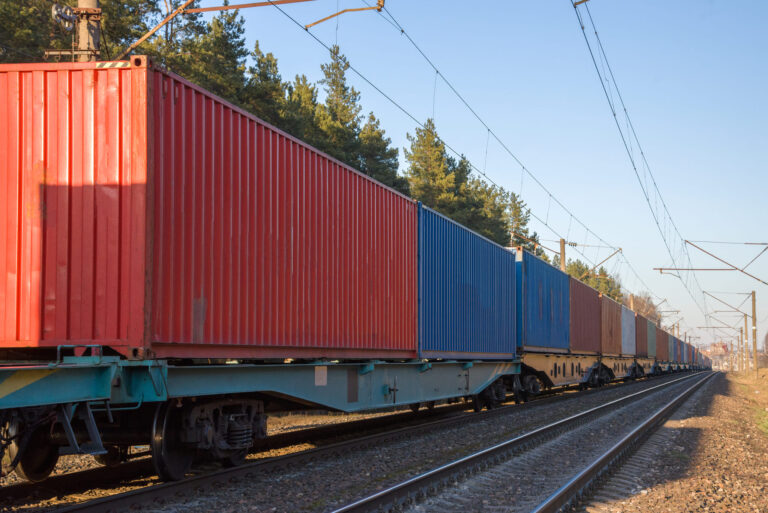What is Drayage and How Does It Work?

As global trade continues to expand, the demand for efficient drayage services is growing rapidly. With the drayage services market projected to increase by over $2.4 billion between 2024 and 2029, this critical component of the supply chain is becoming even more essential. In logistics terms, a drayage service means handling the transport of a shipping container over a short distance – often within the same metropolitan area. Drayage plays a vital role in the seamless movement of goods, connecting ports, rail yards, warehouses, and distribution centers. It acts as the crucial link between major shipping modes like ocean freight, rail, and trucking, ensuring fast, reliable transitions for containerized cargo.
What is Drayage? Meaning and Importance
In logistics, drayage is defined as the short-haul transportation of containerized cargo, typically within the same city or between nearby logistics hubs. In other words, drayage means moving freight over a relatively short distance as part of a longer overall journey. This process serves as the first and last mile in the supply chain, bridging the gap between long-haul segments without the need to unload the cargo from its container. By handling these crucial first-mile and last-mile moves, drayage services keep global trade moving smoothly and cost-effectively.
Key Characteristics of Drayage:
- Short-distance transport: Usually involves trips under 50 miles.
- First-mile and last-mile connection: Handles the initial pickup from a port or rail and the final delivery to a warehouse or distribution center.
- Intermodal link: Connects ports, rail yards, warehouses, and distribution centers to facilitate intermodal transportation.
- Specialized equipment: Often requires trucks with chassis for carrying shipping containers, operated by drivers experienced in port and yard protocols.
Types of Drayage Services
Different shipping needs require specialized drayage solutions. The main types of drayage services include:
Port Drayage
Moves containers from seaports to nearby locations, such as rail yards or distribution centers, reducing port congestion and storage fees. For example, after a container is offloaded from a ship, a port drayage truck hauls it to a warehouse in the same city for unpacking.
Intermodal Drayage
Facilitates seamless transfers between different transportation modes, such as ships, trains, and trucks, without unloading the cargo. This approach relies on standardized intermodal containers (typically 20ft or 40ft), ensuring secure and efficient movement. For example, electronics shipped from China can travel from the Port of Los Angeles to a Chicago warehouse via a combination of drayage trucks and rail, reducing costs and transit times. Union Pacific Railroad offers a three-day intermodal service connecting Los Angeles and Chicago, making it a cost-effective and reliable choice for long-distance freight.

Container Drayage
Focuses on moving standard-sized shipping containers over short distances. Container drayage, meaning the local hauling of loaded containers, is often managed by specialized drayage trucking companies that have the proper chassis and handling equipment. These companies ensure that ISO containers (20ft, 40ft, etc.) are picked up and delivered safely between ports, rail terminals, and warehouses.
Expedited Drayage
Prioritizes time-sensitive shipments, offering fast-tracked port access for high-priority cargo. Expedited drayage services are used when importers or exporters need especially quick movement of a container out of a port or into a facility to meet tight deadlines.
Shuttle Drayage
Moves containers to temporary storage facilities (such as a nearby yard or lot) to ease terminal congestion during peak periods. In shuttle drayage, if a port or rail terminal is overcrowded, containers are shuttled to a holding area and then delivered to their final destination once space or transport is available.
Door-to-Door Drayage
Delivers goods directly to the end customer after pickup from the port or terminal. This is essentially a door-to-door delivery service for freight. It’s a popular choice in e-commerce and retail when companies need a full-service drayage solution that takes a container from the port all the way to the customer’s address without intermediate warehousing.
How Drayage Works: A Step-by-Step Process
Efficient drayage trucking requires precise coordination between container haulers, ports, and distribution centers. Here’s a typical drayage logistics workflow:
Step 1: Cargo Arrival at Port
Containers are unloaded from ships and temporarily stored in the port’s container yard.
Step 2: Pickup by Drayage Truck
Specialized container drayage trucks, often equipped with chassis, collect the containers for transport.
Step 3: Transport to the Next Destination
The truck moves the cargo to a rail yard, warehouse, or final delivery point, depending on the logistics plan.
Step 4: Return or Storage
Empty containers are returned or stored for future use.
Why Drayage is Crucial for the Supply Chain
Drayage may cover short distances, but its impact on the supply chain is disproportionately large. Here are a few reasons why drayage is so important:
- Reduces Delays: By quickly moving containers out of ports and rail yards, drayage helps avoid congestion and costly storage fees for lingering cargo. A reliable drayage operation prevents bottlenecks at critical hubs.
- Cost-Effective: Short-haul transport optimizes the logistics process. Instead of long-haul trucks making small local trips (which is inefficient), dedicated drayage trucks handle local runs, reducing overall transport costs in the supply chain.
- Flexibility: Drayage services can adapt quickly to changing demands. If a shipment’s schedule changes or if there’s a surge in volume, drayage providers can add more trucks or make extra trips as needed to keep freight moving.
- Sustainability: Many drayage fleets are adopting eco-friendly practices, such as using newer low-emission trucks or even electric drayage trucks in some ports. Efficient drayage reduces idling times and supports lower carbon emissions by streamlining container movement.
Choosing the Right Drayage Partner
Selecting the right drayage provider is essential for businesses looking to optimize their supply chains. Whether you need a reliable intermodal drayage company or a specialized container drayage service, choosing a trusted partner can significantly impact delivery times, cost efficiency, and customer satisfaction. Key factors to consider when evaluating drayage partners include their experience with local ports/rail facilities, the size and condition of their truck fleet, technology for tracking shipments, and their ability to handle documentation and compliance requirements at terminals.
Partner with OLIMP for Reliable Drayage Solutions
At OLIMP, we understand the complexities of drayage transportation and offer tailored solutions for every step of the supply chain. Whether you need fast port drayage for quick container turnaround or long-haul intermodal drayage, our team is here to keep your goods moving efficiently.
Ready to optimize your logistics? Explore our drayage services today.
Frequently Asked Questions (FAQ) – OLIMP Warehousing
Q: What does drayage mean?
Drayage means the short-distance transport of freight, usually shipping containers—between local logistics hubs like ports, warehouses, or rail yards.
Q: What does container drayage mean?
Container drayage means transporting shipping containers over short distances, typically from a port to a nearby facility, without unloading the cargo.
You may be interested in

What Is Intermodal Drayage? Benefits & When to Use It
Intermodal drayage is a crucial component of modern logistics, enabling the seamless movement of cargo across multiple transportation modes. It involves the short-distance transport of containers or trailers as part of a longer intermodal journey—typically combining truck, rail, ship, or air transport. By leveraging the strengths of each mode, businesses can optimize costs, speed, and […]

Intermodal Drayage: Definition, Benefits, and Key Differences
For shippers and logistics managers, intermodal drayage is the short-haul trucking segment of a longer freight route. It involves moving containers by truck between ports, rail terminals, and warehouses-typically within a 15–50 mile radius. This first-mile/last-mile trucking leg bridges larger shipping modes (ships, trains, and trucks), keeping cargo flowing smoothly and reducing port congestion. Intermodal […]

What Are Intermodal Containers? Types, Benefits, and Tips for Efficient Shipping
Intermodal containers, also known as shipping containers or ISO containers are large, standardized metal boxes used to transport goods across multiple modes of transportation (ship, rail, and truck) without unloading the cargo inside. These containers are the backbone of global trade, allowing products to seamlessly travel from a factory floor to an overseas ship, onto […]
Ready to streamline your warehousing needs?
Request a quote today and discover how OLIMP's tailored solutions can optimize your operations